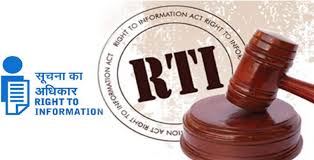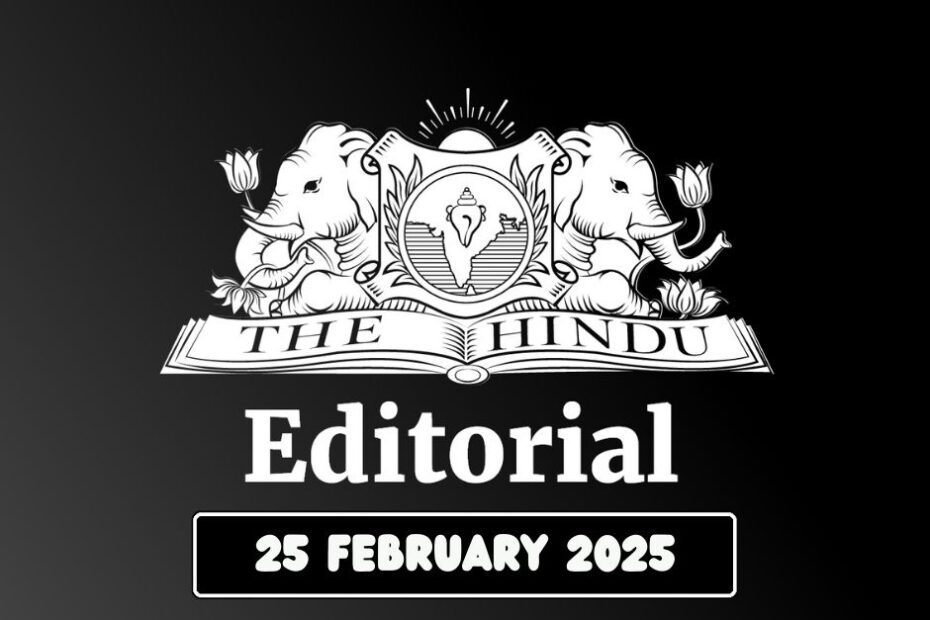| Topic: GS2 – Governance |
| Context |
|

Introduction and Initial Hope
- The introduction of the RTI Act created hope among citizens by recognizing their right to access government information.
- It was considered one of the best transparency laws in the world, aiming to curb corruption and arbitrariness.
- Citizens were expected to act as vigilance monitors over government actions.
- However, over time, the implementation of the Act has not met public expectations, and democratic accountability has not significantly improved.
Early Resistance from the Government
- The government quickly realized that the RTI Act shifted power from public servants to citizens.
- Within a year, attempts were made to amend the Act in ways that would weaken it.
- Widespread public protests led to the withdrawal of these amendments.
Erosion of the RTI Mechanism
- Information Commissions were established as the final appellate authorities for RTI implementation.
- Most commissioner positions were filled by retired bureaucrats who were reluctant to empower citizens.
- The selection process did not prioritize individuals with expertise in transparency and governance.
- Many commissioners viewed their roles as post-retirement benefits and worked with limited commitment.
Delays and Inefficiency in RTI Processing
- High Court judges dispose of over 2,500 cases per year, but RTI commissioners clear far fewer cases.
- Given the simpler nature of RTI cases, each commissioner should ideally handle over 5,000 cases annually.
- The law mandates a 30-day response period for government departments, but no deadline exists for Information Commissions.
- This has led to a backlog, often delaying responses for over a year, making information irrelevant by the time it is received.
- Citizens often struggle to continue pursuing delayed cases, weakening the Act’s effectiveness.
Weak Enforcement of RTI Penal Provisions
- The RTI Act includes provisions for penalizing officers who deny information.
- Many commissioners hesitate to impose penalties, leading to a lack of accountability.
- Governments further weaken the system by delaying the appointment of new commissioners, increasing case backlogs.
Judicial Interpretations and Their Impact
- Courts have ruled that the exemptions under Section 8 of the RTI Act should not be interpreted strictly.
- In a key judgment, the Supreme Court emphasized that indiscriminate RTI requests could hinder administration and national development.
- This ruling led to a perception that RTI usage is problematic, discouraging officials from responding to requests.
Impact of Personal Information Clause
- Another major ruling restricted access to personal information of public officials.
- An RTI applicant had sought details about actions taken against a public servant, but the request was denied under the personal information exemption.
- The court did not examine whether the information was related to public activity or if disclosure was in public interest.
- This ruling ignored a key provision stating that information accessible to Parliament should also be accessible to the public.
- As a result, this decision has been used as a precedent in multiple cases to deny information.
Concerns Over Legislative Changes
- The Digital Personal Data Protection Act has further weakened the RTI Act by restricting access to information.
- The trend of judicial and legislative changes is shifting RTI towards becoming a Right to Deny Information (RDI).
Conclusion
- To preserve the RTI Act’s original purpose, citizens and the media must actively defend it.
- Without public vigilance, fundamental rights under Article 19(1)(a) of the Constitution may be diluted.
| Practice Question: Discuss the challenges faced by the Right to Information (RTI) Act in ensuring government transparency. (250 Words /15 marks) |
2.Fencing out interfaith relationships in the new India
| Topic: GS1 – Indian Society, GS2 – Indian Polity |
| Context |
|

Uttarakhand Implements Uniform Civil Code (UCC)
- The stated aim is to promote gender justice and uniformity in personal laws.
- However, the implementation raises concerns about increased state control over private relationships.
- Combined with anti-conversion laws, it could lead to greater restrictions on interfaith relationships.
Existing Barriers to Interfaith Marriages
- Interfaith marriages in India already face significant societal resistance.
- A 2014 survey of 70,000 people found that fewer than 10% of urban Indians had family members who married outside their caste.
- Interfaith marriages were even rarer, with only 5% of urban respondents reporting such unions in their families.
- The Special Marriage Act, 1954, requires a 30-day notice period, allowing public objections and scrutiny.
- Anti-conversion laws in multiple states add further legal obstacles for those converting for marriage.
Legal Hurdles and Bureaucratic Challenges
- Conversion for marriage now requires multiple administrative steps, such as declarations, waiting periods, and approvals.
- These legal requirements have emboldened vigilante groups, who use them to intervene in personal relationships.
- In one state, 63 out of 101 complaints under the anti-conversion law against Christians were filed by third-party groups.
- Instead of safeguarding individuals, these laws create an environment where legal systems and police authorities can be misused.
Increased Scrutiny on Live-in Relationships
- The UCC introduces new rules for live-in relationships, making them subject to legal registration.
- Couples must submit a 16-page application, provide identification, and obtain approval from community or religious leaders.
- Family members must be informed of their relationship, adding to potential risks.
- Failure to register can lead to six months of imprisonment and a ₹25,000 fine.
- These measures particularly affect interfaith couples, making it difficult to live together without interference.
Impact of These Laws
- Strengthening Traditional Religious Institutions
- Religious leaders gain legal power over personal relationships.
- This contradicts constitutional guarantees of individual freedom in a secular democracy.
- Increased Control Over Women
- Women in interfaith relationships are often seen as manipulated rather than having agency.
- Legal notifications to families increase the risk of coercion and honor-based violence.
- Legalizing Vigilantism
- Right-wing groups use legal frameworks to monitor and interfere in personal relationships.
- The requirement for public notices and approvals enables these groups to track and harass couples.
Growing Trend Across States
- The implementation of UCC in Uttarakhand could serve as a model for other states.
- Rajasthan has introduced similar proposals for live-in relationship registration.
- Gujarat is also considering drafting a UCC along similar lines.
- These developments indicate a trend toward greater regulation of personal relationships.
Impact on Society
- The combined effect of UCC and anti-conversion laws could lead to social segregation.
- Laws that restrict interfaith unions create legal barriers at multiple levels.
- These legal measures may undermine the pluralistic nature of Indian society.
- By restricting personal choices, they interfere with the fundamental rights of individuals.
| Practice Question: Examine how the implementation of the Uniform Civil Code (UCC) affects interfaith relationships and individual freedoms in India. (150 Words /10 marks) |
If you like this Editorial don’t forget to check this –Doing the right thing
